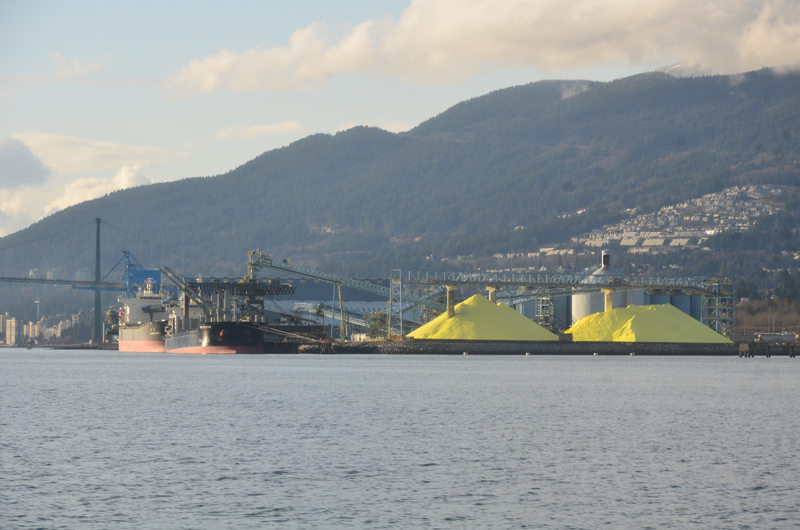As the world’s water supply becomes increasingly stressed, water quality and scarcity concerns are driving new regulations which put more emphasis on conservation practices, while aiming to meet stricter water quality criteria for wastewater treatment. One constituent that is coming under increasing scrutiny from regulators is sulphate.
Sulphate is a common sulphur compound found in a wide range of industrial wastewater sources. These sources can include metallurgical effluents, refinery wastewater, shale gas frac water, cooling tower blow-down, flue gas desulphurization blow-down, steel manufacturing wastewater, and landfill leachates.
Once considered relatively harmless, sulphate was not strictly regulated in the past. However, concerns are growing. Sulphate can impart a taste and odour in drinking water, and can cause digestive disorders when concentration levels are in excess of 600 milligrams per litre (mg/L). Studies have shown that sulphate can negatively impact crop yields and livestock reproduction. Within industrial operations, sulphate salts can hamper performance—they can cause scaling of equipment, leading to premature equipment failure, lower process efficiency, and higher maintenance costs.
As sulphate’s impact on water supply gains heightened awareness, jurisdictions worldwide are tightening discharge requirements for sulphate levels. While requirements vary, it is clear that this issue is becoming a focal point for regulators (see table below for current discharge limits in a sampling of jurisdictions).
In Canada, the aesthetic objective for sulphate in drinking water is less than or equal to 500 mg/L. This objective is based on taste. The Canadian Council of Ministers of the Environment (CCME) has developed water quality guidelines for agriculture protection. The CCME has also established a sulphate limit of 1,000 mg/L for water supplied to livestock.
In addition to the CCME guidelines, provinces and territories can also develop their own criteria. In Alberta, a sulphate content of less than 125 mg/L is desirable for poultry. And in British Columbia, an ambient water quality of 100 mg/L for sulphate has been established for aquatic life protection.
Treatment options
As a nation with a positive water balance, Canada has historically used a dilution approach to meet sulphate discharge limits; however, this approach is becoming increasingly more difficult. Firstly, increasing demand for water from population growth and climate change is affecting the clean water supply available for dilution. Secondly, jurisdictions are applying greater scrutiny to where water is being discharged and how it is being used, leading to even tighter regulations. While dilution may make it possible to meet higher sulphate limits (for example, 1,600 to 1,800 mg/L), achieving lower concentrations will require more advanced technologies.
For some time, membrane systems have been used to remove sulphate from waste streams. Membranes operate by forcing pressurized wastewater through a semi-permeable membrane. The larger sulphate ions are unable to pass through the membrane and are retained in a liquid brine. The resulting brine is disposed of or heated to evaporate the water content, leaving a crystalline by-product.
While membranes are effective for sulphate treatment, up to 30 per cent of the water ends up as a brine waste in the process, resulting in requirements for specific handling and disposal; high energy consumption for the crystallization and evaporation process; and pre-treatment of the water to prevent fouling and scaling of process equipment.
A new direction
Less energy-intensive treatment options that optimize the reuse and recycling of water must be considered. One of those options is ion exchange-based technology. For example, Vancouver-based BioteQ Environmental Technologies has a product called Sulf-IX™ that can recover up to 99 per cent of water for reuse and reduce sulphate to below 250 mg/L, while also reducing energy consumption by as much as 90 per cent (compared to membrane and evaporator-crystallizer systems).
The product uses a two-stage process, employing two different resins to remove sulphate from wastewater. In the first stage, a cationic resin selectively removes calcium and hardness from the feed solution. The resin is regenerated using sulphuric acid, which precipitates the calcium as gypsum. In the second stage, an anionic resin selectively removes sulphate. The resin is regenerated with lime, which precipitates the sulphate as gypsum.
In both stages, the gypsum is separated and filtered to create a solid by-product for disposal and clean water that can be re-used or discharged safely to the local environment. This produces no liquid waste product for disposal; the only water lost in the process is the pore water in the gypsum solids.
Sulphate restrictions have only added to the lengthy list of water treatment challenges which the industry faces today. As water use and water discharge requirements become more stringent, it is essential that operators consider options that deliver on multiple fronts: energy efficiency, environmental compliance, and lower operational costs. The good news is that technology innovation is playing a key role in striking the right balance between environmental needs and operational sustainability.
Andrew Hall, MASc, MBA is a chemical engineer and the VP of sales and marketing at BioteQ Environmental Technologies.










